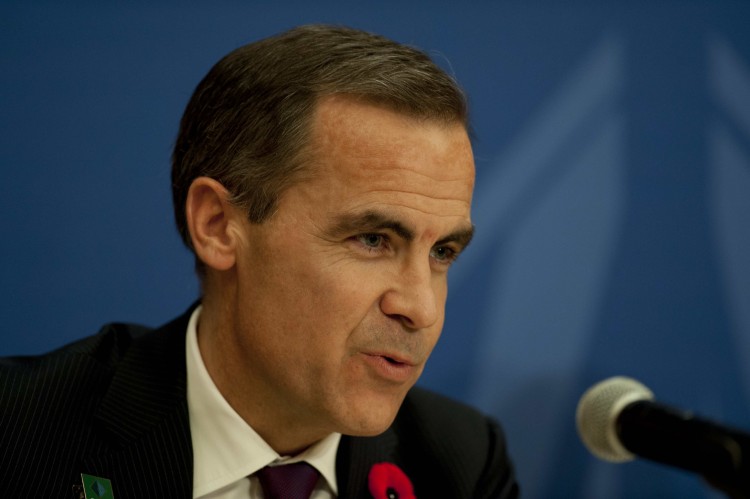Bank of Canada governor Mark Carney in a speech this week called on central banks to pursue transparency in order to be accountable, while noting that their policy guidance is “never a promise” but can most effectively be used in “extraordinary times.”
“While transparency is critical to well-functioning capital markets and effective monetary policy, forward guidance of policy is best used sparingly in normal times,” Carney said in a speech to financial analysts at the CFA Society Toronto on Dec. 11.
“In extraordinary times, however, conditional guidance can be used to resolve time inconsistencies and achieve a better path for the economy,” he added.
Carney said an ongoing focus of regulators should be to ensure that company disclosure is “full, fair, and timely.” Meanwhile, for central banks, successful monetary policy requires transparency and clarity around their objectives and their implementation.
“The goal here is, in effect, to allow markets and the public to ’think along with us,' not only promoting the appropriate formation of policy expectations given current information, but also allowing those expectations to evolve efficiently as new information is received,” Carney said.
In addition, he noted that the Bank of Canada occasionally gives guidance in normal times based on the economic and financial factors it considers the most important.
“This guidance is never a promise, however,” he said.
“Actual policy will always respond to the economic and financial outlook as it evolves. Market expectations of policy should do the same, reflecting differences in perspectives amid a common understanding of our objective.”
‘Clear, Simple Statement to Canadians’
He said that more explicit policy guidance may be most useful in extraordinary times.
For example, in April 2009 when the policy interest rate was at its lowest possible level (0.25 percent) and additional stimulus was needed, the bank committed to holding the rate at that level, conditional on the outlook for inflation.
Carney said the conditional commitment succeeded in providing the desired stimulus and underpinned a rebound in growth and inflation in Canada, and when the inflation outlook changed, the path of interest rates changed accordingly.
“Our conditional commitment worked because it was exceptional, explicit, and anchored in a highly credible inflation-targeting framework,” he said, adding that it also worked because it made “a clear, simple statement directly to Canadians.”
Last week the Bank of Canada again maintained its overnight rate target at 1 percent, while again noting that “over time” the current monetary policy stimulus—via low interest rates—will need “some modest withdrawal.”
Key Risks to Financial System
In its December 2012 Financial System Review (FSR) released last week, the bank identified that the key risks to Canada’s financial system remain broadly the same as those noted in the June FSR, emanating primarily from the external environment.
External risks include the euro-area crisis; deficient global demand, with the most important near-term risk being the fiscal cliff in the United States; and low interest rates in the major advanced economies.
Meanwhile, key domestic risks include the rising Canadian household debt along with imbalances in the housing market in terms of home sales, construction, house prices, and demand.
“Households should ensure that their borrowing is in line with their current and prospective ability to service their debt,” the FSR advised Canadians.
The Epoch Times publishes in 35 countries and in 19 languages. Subscribe to our e-newsletter.





